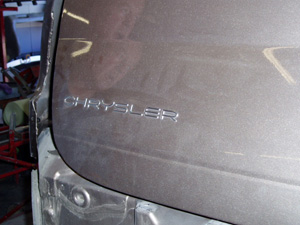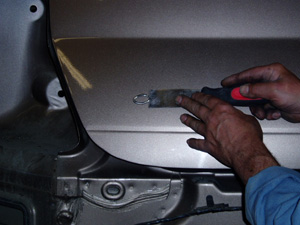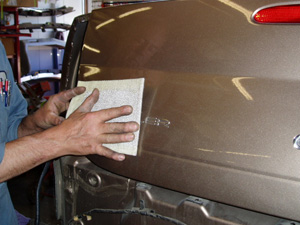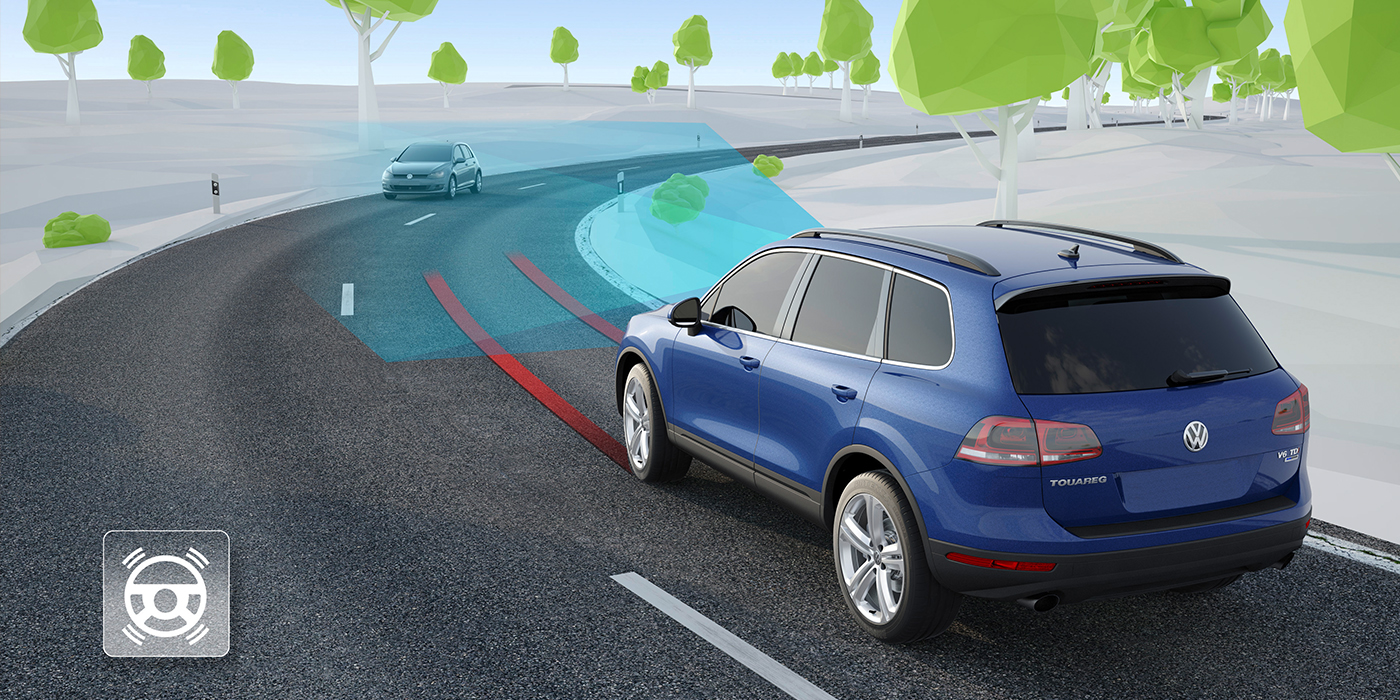A fairly recent entrant into the tool side of the collision repair industry is the heat inductor. Well, it’s nothing new really. Heat inductors have been around in various industries for about 100 years and are commonly used in the manufacturing process for things like case hardening of gears and shafts. They’re also used in cook tops on stoves to allow a quicker, more even heat. But heat inductors are relatively new to the collision repair industry.
Note: Our shop doesn’t just occasionally use our inductor. We use it every day — sometimes several times a day.
What Is It?
 Heat inductors are electromagnetic components. When electrical current passes through wire, which is wrapped around a non-conductor (phenolic, plastic, etc.), it forms a high-frequency magnetic field.This magnetic field then travels through a few inches of space, such as plastic trim, moldings, sound deadeners and glass, until it reaches the metal base (inductors don’t work on fiberglass or ABS bodies). Once this magnetic field reaches the metal, it meets electrical resistance, which is what makes it work.
Heat inductors are electromagnetic components. When electrical current passes through wire, which is wrapped around a non-conductor (phenolic, plastic, etc.), it forms a high-frequency magnetic field.This magnetic field then travels through a few inches of space, such as plastic trim, moldings, sound deadeners and glass, until it reaches the metal base (inductors don’t work on fiberglass or ABS bodies). Once this magnetic field reaches the metal, it meets electrical resistance, which is what makes it work.
The better conductor of electricity a metal is, the less effective a heat inductor will be because there’s less resistance. So steel, which isn’t as good a conductor as copper, gets quite hot when an electromagnetic field passes through it.
We use a lot of steel in car bodies, so they’re ideally suited to the use of a heat inductor. A heat inductor also will work for heating aluminum, with the proper fixture or attachment, but a much lower temperature will be reached because aluminum is a much better conductor of electrical current than steel is — therefore, less resistance.
What It Can Do for You
 Lots of things … removal of side moldings, emblems, weather stripping, decals, glass, undercoating, sound deadeners and caulking. You can also heat rusted nuts and bolts in areas where a torch would be extremely damaging.
Lots of things … removal of side moldings, emblems, weather stripping, decals, glass, undercoating, sound deadeners and caulking. You can also heat rusted nuts and bolts in areas where a torch would be extremely damaging.
I know what you’re thinking: “Hey! I can use my heat gun just as well.” No you can’t! That’s what I thought too — but I was wrong.
The reason the heat inductor works so well is because it heats the metal from the inside out and releases the glue cleanly. On decals or overlays for example, the surface becomes warm when the inductor is applied to it, releasing the glue from the paint instead of the decal. So now, when you remove the decal, most of the glue is left on the decal, instead of on the surface paint.
 It works the same way on moldings. You apply the inductor pad on the outside, but the heat moves from the steel through the paint into the adhesive, releasing the adhesive from the paint, not the molding. This saves time on clean up and materials.
It works the same way on moldings. You apply the inductor pad on the outside, but the heat moves from the steel through the paint into the adhesive, releasing the adhesive from the paint, not the molding. This saves time on clean up and materials.
Heating rusted nuts on the backside of Ford pickup bumpers works great when you don’t want to burn paint or turn chrome blue. You can also remove glass without breaking it.
Potential Problems
You need to be careful when removing glass not to overheat the pinch weld that the adhesive and the glass rest on. Steady outward pressure on the glass works best. I use a porto-power with a rubber ball on the inside to achieve constant pressure and, in effect, a release.
If you overheat the pinch weld, you can bubble the paint under the urethane, which could seriously compromise the structural integrity of the bond. So be smart.
 And remember, the inductor heats metal when it’s in the proximity of metal. So be careful. Once, I was removing a bonded glass on the rear door of a four-door pickup. I had a plastic bag full of bolts and nuts from the door that I’d laid down on the floor mat. I then placed my inductor and heating pad attachment on top of the bolt bag and floor mat. When I removed the inductor 15 minutes later, the bolts in the bag had melted the owner’s nice new floor mat!
And remember, the inductor heats metal when it’s in the proximity of metal. So be careful. Once, I was removing a bonded glass on the rear door of a four-door pickup. I had a plastic bag full of bolts and nuts from the door that I’d laid down on the floor mat. I then placed my inductor and heating pad attachment on top of the bolt bag and floor mat. When I removed the inductor 15 minutes later, the bolts in the bag had melted the owner’s nice new floor mat!
Try It, You’ll Like It
I think heat inductors are great tools to assist us in doing our jobs better. They have many uses where flameless heat or heat from the inside out is best. I’ve had my inductor for seven years and have had no problems whatsoever related to durability. And it gets a lot of use, every day, several times a day.











